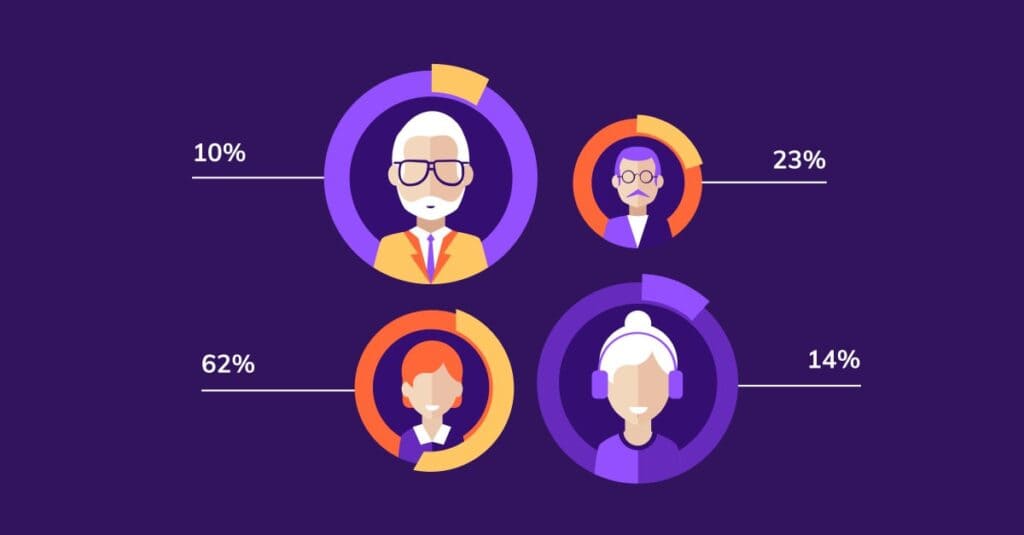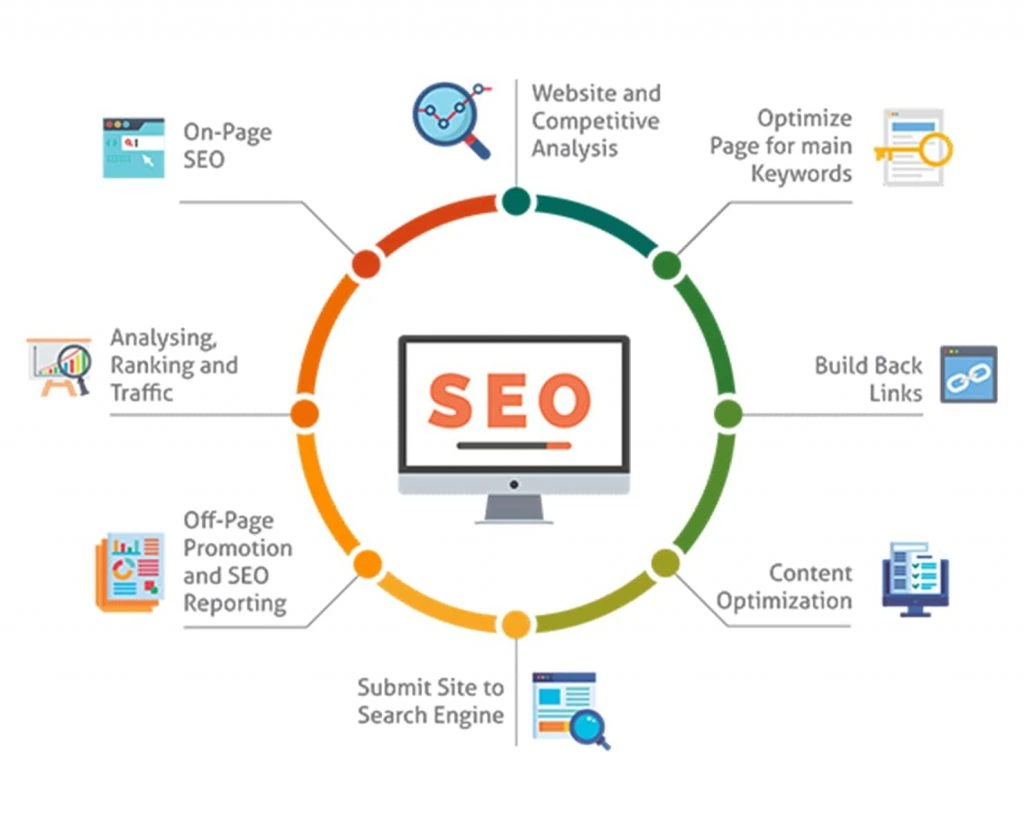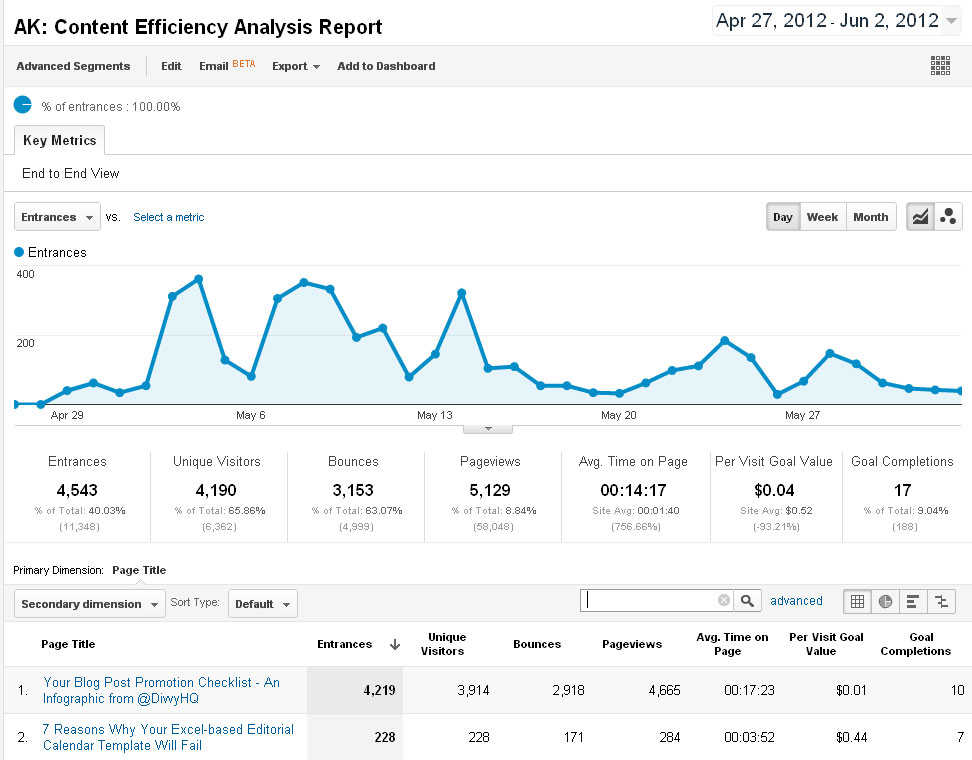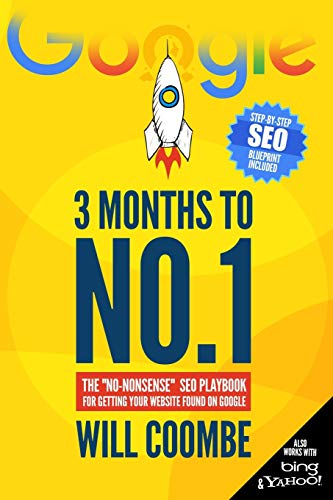The Ultimate Digital Marketing Strategy Guide
Welcome, marketing mavens and novices alike, to your one-stop shop for digital marketing excellence: The Ultimate Digital Marketing Strategy Guide. As we navigate the sparkling, fast-paced sea of the digital landscape, it's only natural to feel like a ship lost in a storm. With so much evolving technology, trends, and customer behaviours, where do you even begin?
Here's a sobering fact: as of 2023, there are over 5 billion internet users worldwide – a whopping 63% of the global population! Gone are the days when you could count on traditional marketing to carry your message to your target audience. In today's increasingly interconnected world, if you aren't fully leveraging the power of digital marketing, you're likely leaving a substantial piece of your potential market share untapped.
Here's the encouragement: successful digital marketing is more than having an enormous budget or being at the forefront of every trend. It's about having a well-structured, dynamic strategy that lets you navigate this ocean with purpose and agility. And that's where our Ultimate Digital Marketing Strategy Guide comes in.
From well-established SEO practices to the latest in social media tactics, from crafting compelling email campaigns to mastering the art of content marketing, we've packed this guide with actionable insights, step-by-step strategies, and expert secrets that will transform how you approach your digital marketing. So, whether you're a small business owner trying to make your mark, a seasoned marketer looking to update your toolkit, or an ambitious entrepreneur preparing to launch your next big idea, this guide is your compass in the bustling, boundless world of digital marketing.
Prepare to embark on an enlightening journey through the complex, exciting, and immensely rewarding realm of digital marketing. We can't promise it'll be easy, but with the Ultimate Digital Marketing Strategy Guide at your side, it's sure to be an adventure worth embarking on. Let's set sail, shall we?
Table of Contents
Navigating the Digital Landscape

The digital landscape constantly evolves, with new technologies, platforms, and consumer behaviours shaping how businesses connect with their audiences. Adopting a strategic approach to digital marketing is crucial to thrive in this dynamic environment. A well-crafted strategy ensures that your efforts are aligned with your business goals, target audience, and industry trends.
Before diving into the execution phase, clearly defining your digital marketing strategy is imperative. This involves understanding your business objectives, identifying your target audience, and thoroughly analysing the competitive landscape. By laying a solid foundation, you set yourself up for success and can tailor your tactics accordingly.
1.1 Setting Clear Objectives
To embark on a successful digital marketing journey, it is crucial to lay a strong foundation by establishing clear and measurable objectives. These objectives should complement your overall business goals and adhere to the principles of being specific, measurable, attainable, relevant, and time-bound (SMART). Whether you aim to drive higher website traffic, increase conversions, or strengthen brand awareness, setting well-defined objectives is essential as they provide focus and enable you to track your progress effectively.
- Align with Business Goals: When setting your digital marketing objectives, it's vital to ensure they align seamlessly with your broader business goals. Consider the key outcomes you want to achieve as a company: revenue growth, market expansion, customer retention, or product innovation. By connecting your digital marketing efforts to these objectives, you create a cohesive strategy that supports the overall success of your business.
- Be Specific: Avoid vague or generic objectives and be precise about what you want to accomplish through your digital marketing initiatives. For instance, instead of stating a general goal like “increase website traffic,” specify a measurable target such as “increase website traffic by 20% over the next quarter.” The more specific your objectives are, the easier it becomes to develop relevant strategies and measure progress accurately.
- Measure Progress: Measurability is critical to establishing objectives for digital marketing. Determine the metrics you will use to track your progress towards each goal. These metrics include website analytics, conversion rates, click-through rates, engagement levels, and social media mentions. By defining clear measurement criteria, you gain valuable insights into the effectiveness of your marketing efforts and can make data-driven decisions to optimise your strategies.
- Attainable Goals: While it's essential to aim high, it's equally important to set achievable objectives. Consider your available resources, budget, and expertise when defining your digital marketing goals. Setting unrealistic objectives can lead to frustration and demotivation. Instead, establish goals that challenge your team while remaining within the realm of feasibility. This will foster a sense of achievement and keep your team motivated.
- Relevance to Target Audience: Ensure your digital marketing objectives are relevant to your target audience. By understanding your audience's needs, preferences, and behaviours, you can shape your goals to address their pain points and deliver value. For example, if your target audience predominantly uses social media platforms, a relevant objective might be to increase brand engagement on those channels. Relevance ensures that your marketing efforts resonate with your audience and yield better results.
- Time-Bound Targets: To provide a sense of urgency and maintain focus, set specific time frames for achieving your digital marketing objectives. Instead of having open-ended goals, establish a clear timeline for completion. This helps prioritise tasks and lets you evaluate your progress regularly and make necessary adjustments. Time-bound objectives create a sense of accountability and ensure your marketing efforts stay on track.
By implementing these strategies and considering the SMART framework, you lay a solid foundation for your digital marketing initiatives. Clear and measurable objectives enable you to align your efforts with overall business goals, maintain focus, measure progress accurately, and make data-driven decisions to optimise your strategies. With well-defined objectives, you can confidently navigate the dynamic world of digital marketing and achieve tangible results for your business.
1.2 Understanding Your Target Audience

To establish a strong connection with your target audience, it is crucial to possess a profound understanding of their needs, preferences, and behaviours. This understanding can be achieved by creating detailed buyer personas that accurately represent your ideal customers. By considering various factors such as demographics, psychographics, and online behaviour, you can gain valuable insights that will empower you to craft personalised messaging and select the most appropriate digital channels to engage your audience effectively.
When developing buyer personas, it is essential to delve into the demographics of your target customers. This includes age, gender, location, income level, and occupation. Understanding these demographic characteristics provides a foundation for comprehending your audience's unique challenges, desires, and aspirations.
Beyond demographics, psychographics plays a significant role in understanding your target customers at a deeper level. Psychographic information encompasses their interests, values, attitudes, hobbies, lifestyle choices, and motivations. By grasping the psychographic aspects of your audience, you can create messaging that resonates with their values and addresses their specific pain points.
Additionally, analysing the online behaviour of your target customers is paramount in today's digital landscape. Consider the digital channels they frequent, such as social media platforms, websites, blogs, or forums. Understand how they consume and interact with content, whether they prefer visual or written formats and the frequency and duration of their online activities. This knowledge will assist you in identifying the most effective channels to reach and engage your audience, ensuring your messages are delivered through the platforms they are most receptive to.
Combining demographic, psychographic, and online behaviour insights allows you to create comprehensive buyer personas that breathe life into your target audience. These personas serve as fictional representations of your ideal customers, encapsulating their unique characteristics and behaviours. Personas enable you to empathise with your audience, putting yourself in their shoes and understanding their perspectives, challenges, and goals.
Armed with these buyer personas, you can tailor your messaging to speak directly to the needs and desires of your target customers. Crafting content that resonates with their interests, values, and pain points will capture their attention and establish trust and credibility.
Furthermore, knowing which digital channels to utilise becomes more strategic with the aid of buyer personas. You can optimise your marketing efforts by choosing the platforms where your target customers are most active, maximising your reach and engagement. This targeted approach ensures that your message reaches the right people, in the right place, and at the right time.
- Garbugli, Étienne (Author)
- English (Publication Language)
- 196 Pages – 08/24/2021 (Publication Date) – Étienne Garbugli (Publisher)
1.3 Analysing the Competitive Landscape
Performing a thorough examination of the competitive landscape within your industry is a vital step in understanding the dynamics and nuances that drive success. By conducting a comprehensive analysis, you can uncover critical players, identify emerging market trends, and discover unique opportunities for differentiation. Furthermore, delving into your competitors' digital marketing strategies, online presence, and customer engagement tactics allows you to gain valuable insights into industry best practices and, more importantly, unearth potential gaps that can be harnessed to secure a competitive edge.
To begin, start by identifying the major players in your industry. Explore both established companies and emerging disruptors who are making waves. Consider their market share, brand reputation, and customer base. This evaluation will provide a holistic view of the competitive landscape, allowing you to gauge the existing power dynamics and identify the dominant forces within the industry. By understanding the strategies and strengths of these key players, you can effectively benchmark your performance and ascertain areas for improvement.
As you analyse the digital marketing strategies employed by your competitors, delve into their online presence across various channels. Scrutinise their websites, social media profiles, and content marketing efforts. Evaluate the consistency, quality, and effectiveness of their messaging. Please take note of the platforms they utilise to engage with their audiences, such as social media platforms, email marketing, or influencer collaborations. Assess the frequency and relevance of their online interactions and the level of customer engagement they generate. By studying these aspects, you can gain inspiration for enhancing your digital marketing initiatives while identifying potential gaps your competitors may have overlooked.
Furthermore, investigate the customer engagement tactics implemented by your industry peers. Analyse how they connect with their target audience, nurture relationships, and drive customer loyalty. Explore their customer service practices, including response times, issue resolution strategies, and personalised experiences. Consider continuously improving their offerings using customer feedback mechanisms like surveys or reviews. By evaluating these aspects, you can gain insights into successful customer engagement approaches and devise strategies to enhance customer interactions.
This comprehensive analysis will enable you to identify industry best practices and gaps that can be leveraged to gain a competitive advantage. You can tailor your approach to better address customer needs and preferences by recognising areas where your competitors need to capitalise on emerging trends. For example, suppose a competitor needs a more substantial online presence or more engaging content. In that case, you can focus on building a solid online brand and delivering valuable content to capture the attention and loyalty of your target audience. Similarly, if customer service is an area of weakness for your competitors, you can invest in exceptional customer support and personalised experiences to differentiate yourself in the market.
Leveraging Key Digital Marketing Channels
With your strategy in place, it's time to explore the vast array of digital marketing channels available. Each channel offers unique opportunities to connect with your target audience and achieve specific marketing objectives. Let's dive into some of the most prominent digital marketing channels and discover how to make the most of them.
2.1 Search Engine Optimisation (SEO)

By optimising your website and content to align with search engine algorithms, you can significantly improve your rankings in search results, ensuring that your brand becomes easily discoverable to potential customers. This comprehensive approach incorporates vital elements, such as keyword research, on-page optimisation, quality content creation, and link building, all working together to elevate your search engine rankings and drive organic traffic to your digital doorstep.
At the heart of SEO lies the practice of conducting thorough keyword research. This process involves identifying your target audience's words and phrases when searching for products, services, or information related to your industry. By understanding the language and search intent of your potential customers, you can strategically incorporate these keywords throughout your website and content, allowing search engines to recognise the relevance of your offerings.
On-page optimisation plays a vital role in SEO success. It involves optimising various elements within your web pages, such as meta tags, headings, and URLs, to enhance their search engine visibility. Optimising your website's structure and navigation makes it easier for search engine bots to crawl and index your content effectively. Ensuring that your web pages are well-structured and optimised provides search engines with valuable signals about your content's quality and relevance, ultimately improving your chances of securing higher rankings.
Creating high-quality content is another essential aspect of SEO. Search engines strive to deliver the most valuable and relevant content to users, and by producing informative, engaging, and authoritative content, you can establish your brand as a trusted source in your industry. Valuable content not only attracts and retains visitors' attention but also encourages other websites to link back to your pages, thereby increasing your website's authority and credibility in the eyes of search engines.
Link building, the process of acquiring high-quality backlinks from reputable websites, remains a cornerstone of SEO. These backlinks act as votes of confidence and trust from other websites, signalling to search engines that your content is valuable and deserving of higher rankings. However, it's crucial to prioritise quality over quantity when building backlinks. A few high-authority backlinks from reputable sources can carry more weight than numerous low-quality links.
Understanding the significance of SEO is crucial in today's digital landscape. Recent studies have revealed that websites on the first page of search engine results receive more than 90% of organic traffic, with most users seldom venturing beyond that initial page. This statistic emphasises the criticality of incorporating SEO into your digital marketing strategy. By investing in SEO efforts, you position your brand for increased visibility, improved search rankings, and a steady stream of organic traffic, ultimately leading to higher conversions and business success.
- Coombe, Will (Author)
- English (Publication Language)
- 247 Pages – 09/11/2017 (Publication Date) – Independently published (Publisher)
2.2 Pay-Per-Click Advertising (PPC)
PPC advertising, or pay-per-click advertising, has revolutionised how businesses promote their products and services online. With PPC, you can showcase targeted ads across various platforms, including search engines, social media networks, and other websites. What sets PPC apart is its unique payment structure, where you only pay when a user clicks on your ad, ensuring that your advertising budget is spent efficiently.
Leading platforms like Google Ads and social media advertising networks provide robust tools and features that empower advertisers to target their desired audience precisely. Through sophisticated targeting options, you can narrow down your reach based on demographics, interests, and even online behaviour. This level of precision allows you to connect with potential customers most likely to be interested in your offer, increasing the chances of conversions and sales.
Combining three essential elements: compelling ad copy, relevant keywords, and optimised landing pages, is crucial to make the most out of your PPC campaigns. Crafting persuasive and engaging ad copy grabs the attention of your target audience and entices them to click on your ads. Additionally, conducting thorough keyword research helps you identify the specific terms and phrases that potential customers use to search for similar products or services. By incorporating these relevant keywords into your ads, you can enhance their visibility and improve their performance.
However, driving users to your website is only the first step. To ensure a high return on investment (ROI), it's vital to provide an exceptional user experience once they arrive at your landing page. Optimised landing pages are designed to be visually appealing, user-friendly, and tailored to the advertised product or service. These pages should provide relevant information, address the needs and concerns of potential customers, and offer clear calls to action that encourage them to take the desired action, such as making a purchase or filling out a form.
The effectiveness of PPC advertising is evident through recent industry reports. One striking statistic reveals that businesses generate an average of $2 in revenue for every $1 they invest in Google Ads. This demonstrates the immense potential and profitability achieved when executing PPC strategies strategically. By allocating your advertising budget wisely, refining your targeting options, and continuously optimising your campaigns, you can leverage PPC advertising to drive significant revenue growth for your business.
2.3 Social Media Marketing

Social media has brought about a monumental shift in how businesses interact with their customer base. It has emerged as a transformative platform, enabling real-time communication, fostering brand storytelling, and facilitating community building. To tap into this immense potential, businesses must identify the social media channels where their target audience is most active and establish a strong presence through a well-crafted strategy.
To begin, it is essential to conduct thorough research to determine the social media platforms that resonate most with your target audience. By understanding their preferences and behaviours, you can effectively tailor your approach to engage with them. Whether it's Facebook, Instagram, Twitter, LinkedIn, or other emerging platforms, each channel has unique characteristics and user demographics. By identifying and focusing on the platforms your audience frequents, you can optimise your efforts and maximise the impact of your social media marketing.
Building a solid presence on social media requires creating compelling and engaging content. Storytelling becomes a powerful tool in this context, allowing businesses to convey their brand message and values effectively. You can capture your audience's attention and foster a genuine connection by utilising various forms of content, such as videos, images, infographics, and writing posts. Maintaining a consistent brand voice and tone across all your social media channels is essential to reinforce your identity and ensure a cohesive experience for your followers.
Interactivity is a crucial aspect of successful social media marketing. By creating interactive posts, surveys, polls, contests, and quizzes, you can encourage your audience to participate and engage with your brand actively. This enhances their overall experience and provides valuable insights and feedback that can inform your future marketing efforts.
Meaningful conversations play a vital role in building relationships and fostering customer loyalty. Responding promptly to comments, messages, and mentions demonstrates your commitment to customer satisfaction. Engage in authentic conversations, address concerns, and express appreciation for your customers' support. You can establish trust and credibility by actively listening and engaging in two-way communication, turning your social media followers into brand advocates.
Leveraging social media advertising is another crucial aspect of expanding your reach and driving targeted traffic to your website or landing pages. Utilise the targeting options available on various platforms to reach your desired audience based on demographics, interests, behaviour, and location. Craft compelling ad copy and visually appealing creatives that resonate with your target audience, prompting them to take action. Monitor the performance of your ads closely and make data-driven adjustments to optimise your campaigns for better results.
Recent studies have indicated that a significant portion of social media users, approximately 54%, conduct product research directly on social platforms. This finding highlights the immense power of social media marketing in influencing purchase decisions. By strategically positioning your brand and products through engaging content, testimonials, and user-generated content, you can positively impact consumer perceptions and sway their buying choices in your favour.
- Audible Audiobook
- Joe Pulizzi (Author) – Joe Pulizzi (Narrator)
- English (Publication Language)
- 12/20/2013 (Publication Date) – Elephant Audiobooks (Publisher)
2.4 Content Marketing
Content serves as the backbone of any successful marketing strategy. It is the driving force behind attracting, engaging, and retaining your target audience. By consistently creating and distributing valuable, relevant content, you can establish a strong connection with your audience and position yourself as a trusted authority in your industry.
Developing a well-defined plan encompassing various formats, such as blog posts, videos, infographics, e-books, and more, is crucial to harness the power of content marketing. Each form serves as a unique avenue to address your audience's pain points, provide valuable insights, and offer solutions to their challenges.
A robust content marketing strategy goes beyond simply producing content. It involves optimising your content for search engines, ensuring that it ranks well in search results and drives organic traffic to your website. This includes conducting keyword research, using relevant keywords in your content, and optimising meta tags, headings, and other on-page elements.
Furthermore, sharing your content across relevant channels is vital to maximise its reach. Identify the platforms and channels where your target audience is most active and ensure your content is readily available and easily shareable. This can include social media platforms, industry-specific forums, email newsletters, and other online communities. By strategically promoting your content through these channels, you increase the chances of reaching a wider audience and driving more traffic to your website.
One of the key advantages of a well-executed content marketing strategy is its potential to generate higher conversion rates. Companies that prioritise content marketing have been shown to experience conversion rates nearly six times higher than their competitors, who do not prioritise it. This statistic underscores the significance of investing time and resources into crafting valuable content that resonates with your audience.
Harnessing the Power of Data and Analytics

In the digital realm, data is king. Leveraging data and analytics allows you to gain valuable insights into your audience, track the performance of your campaigns, and make data-driven decisions. By harnessing the power of data, you can optimise your digital marketing strategy for maximum impact and return on investment.
3.1 Implementing Tracking and Measurement
Install tracking codes like Google Analytics on your website and digital assets to gather valuable data on user behaviour, website traffic, and conversions. Set conversion goals and track key performance indicators (KPIs) relevant to your objectives. Regularly analyse your data to identify trends, patterns, and areas for improvement.
3.2 Conducting A/B Testing
A/B testing allows you to compare different versions of your digital assets (such as landing pages, emails, or ads) to determine which performs better. Test elements like headlines, images, calls to action, and layouts to optimise conversion rates and improve the effectiveness of your campaigns.
Tip: A/B testing can increase conversion rates by up to 30%, enabling you to make informed decisions and continuously optimise your digital marketing efforts.
3.3 Embracing Marketing Automation
Marketing automation platforms streamline and automate repetitive marketing tasks, allowing you to nurture leads, deliver personalised experiences, and scale your efforts effectively. You can save time, increase efficiency, and provide a seamless customer journey by automating email marketing, lead nurturing, social media scheduling, and other processes.
Stat: Businesses that use marketing automation to nurture leads experience a 451% increase in qualified leads, highlighting the transformative power of automation in digital marketing.
Staying Agile and Adapting to Change

In the fast-paced world of digital marketing, it is crucial to stay agile and adapt to emerging trends, technological advancements, and changes in consumer behaviour. Continuously monitor and analyse your digital marketing efforts, keep an eye on your competitors, and stay informed about industry developments. You can optimise your strategy and seize new opportunities by remaining flexible and open to experimentation.
4.1 Continuous Monitoring and Optimisation
Regularly monitor the performance of your digital marketing campaigns using analytics and tracking tools. Analyse the data, identify areas of improvement, and optimise your campaigns accordingly. Continuously test new tactics, adjust your strategies, and allocate resources based on the channels and tactics that deliver the best results.
4.2 Embracing Emerging Technologies
As technology evolves, new opportunities for digital marketing emerge. Stay abreast of emerging technologies like artificial intelligence (AI), voice search, augmented reality (AR), and chatbots. Assess their relevance to your business and explore how to leverage them to enhance your digital marketing efforts and deliver exceptional customer experiences.
4.3 Adapting to Changing Consumer Behaviour
Consumer behaviour constantly evolves, driven by technological changes, social trends, and economic factors. Stay attuned to shifts in consumer preferences, communication preferences, and purchase behaviours. Adjust your messaging, content strategy, and channels to ensure your brand stays relevant and resonates with your target audience.
Conclusion: Fuelling Your Digital Success
Crafting and executing a robust digital marketing strategy is critical to unlocking success in today's digital landscape. By defining your objectives, leveraging the proper channels, harnessing data and analytics, and staying agile, you can propel your business forward, reach new heights, and cultivate meaningful connections with your target audience.
Remember, digital marketing is not a one-size-fits-all approach. Continuously monitor, analyse, and adapt your strategy to align with your business goals and the ever-changing digital landscape. With the right system, tools, and mindset, you can confidently navigate the digital realm and unlock the full potential of digital marketing. So, go ahead, take the plunge, and fuel your digital success!
Last update on 2024-05-19 / Affiliate links / Images from Amazon Product Advertising API




Very well written article and it is very important in today’s time. Digital marketing offers numerous benefits for businesses and individuals. Thank you so much for sharing this info.